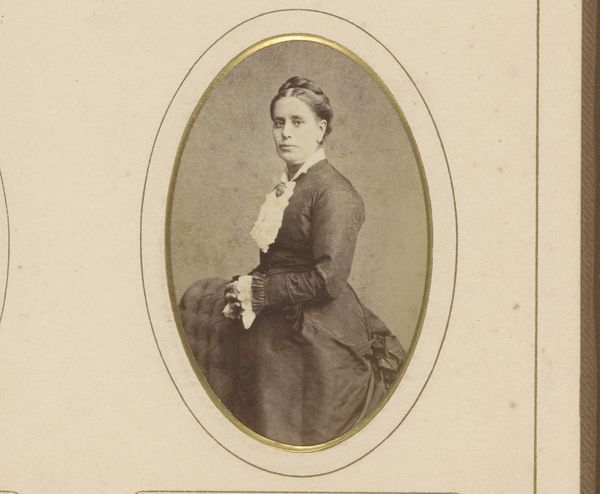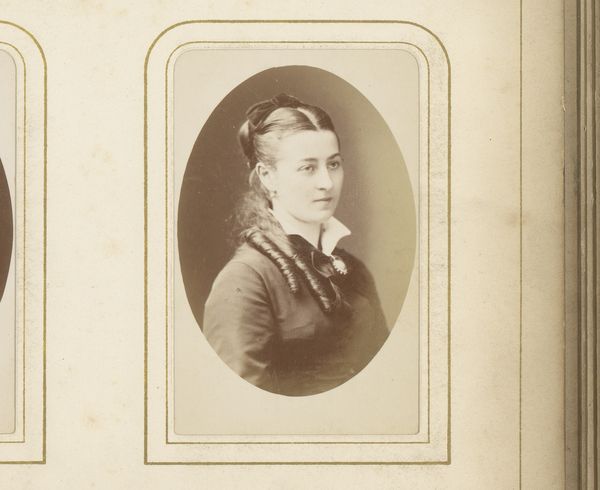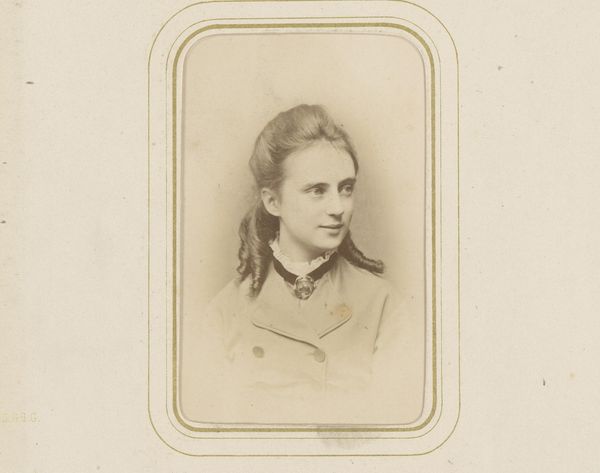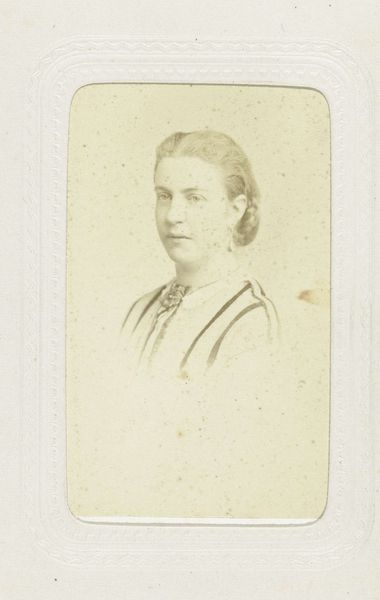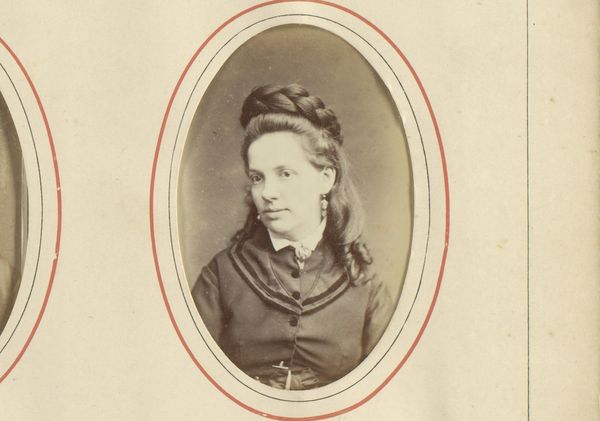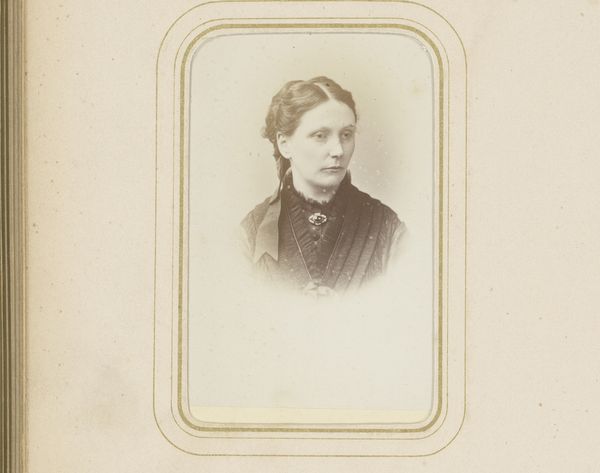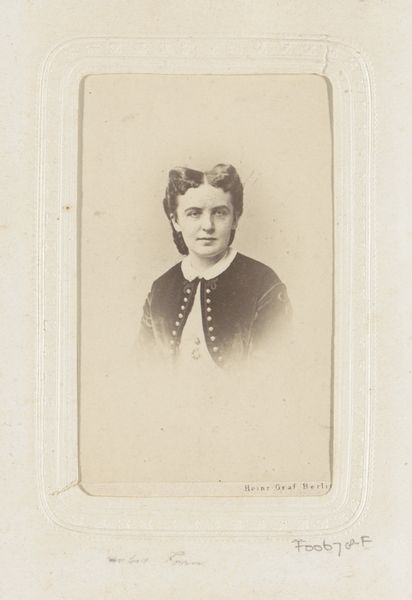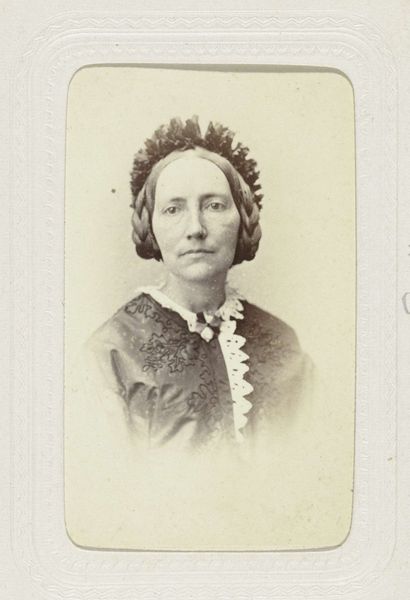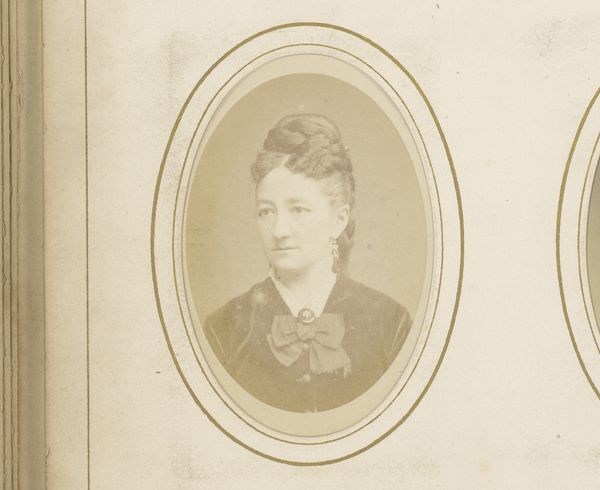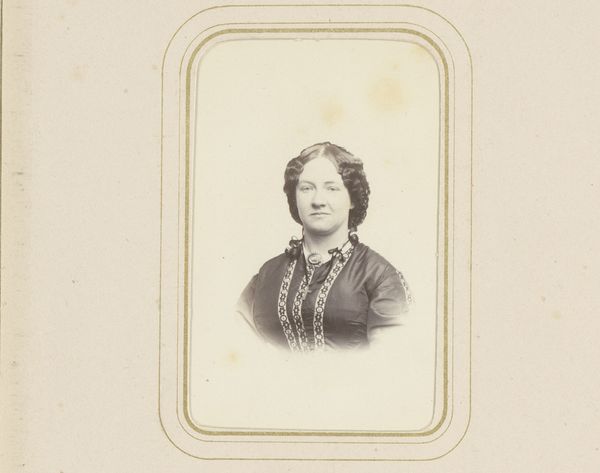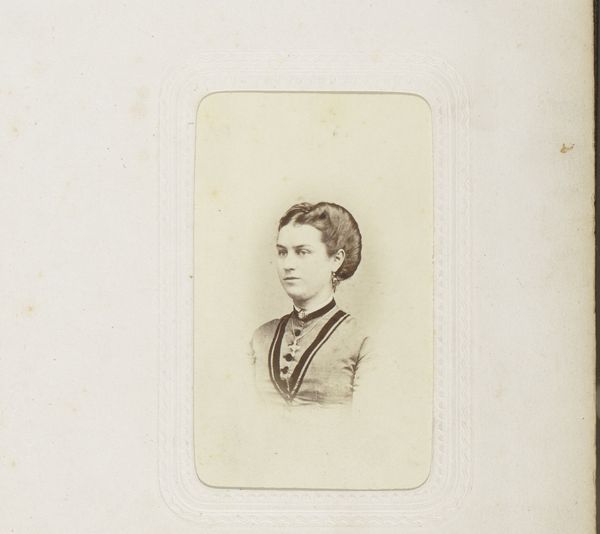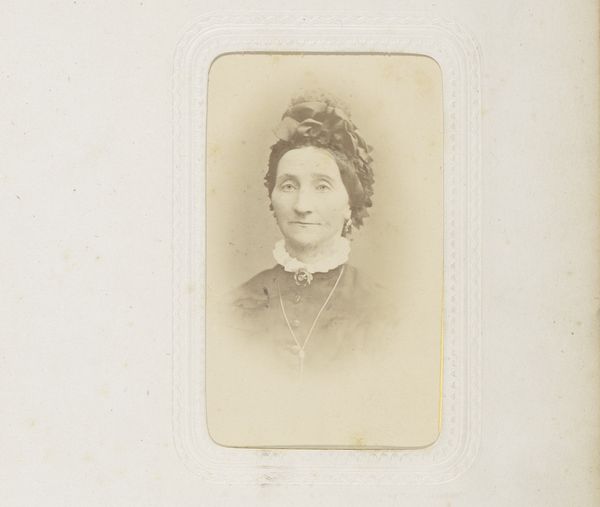
Studioportret van een vrouw met gevlochten haar met een medaille of onderscheiding om haar nek c. 1863 - 1866
0:00
0:00
wegnermottu
Rijksmuseum
photography, albumen-print
#
portrait
#
photography
#
albumen-print
Dimensions: height 80 mm, width 54 mm, height 296 mm, width 225 mm
Copyright: Rijks Museum: Open Domain
Editor: Here we have "Studioportret van een vrouw met gevlochten haar met een medaille of onderscheiding om haar nek", roughly translated, Study Portrait of a Woman with Braided Hair Wearing a Medal or Decoration, a photographic albumen print created sometime between 1863 and 1866. The sepia tones lend it a real sense of history, but also, given it’s a photograph, I’m immediately drawn to questions of access. Who was this woman, and who was the intended audience? What do you make of it? Curator: Immediately I consider the material reality of this albumen print. The production process involved coating paper with egg white and then sensitizing it with silver nitrate. This wasn’t a quick process. And each of those materials carries economic and social implications. Who had access to eggs and silver? Who had the time for this labor? Editor: That's interesting. So you see the work itself as a product of a certain kind of society? Curator: Absolutely. Consider the sitter’s pose and attire. It speaks to a certain level of bourgeois aspiration, perhaps. But more importantly, look at the medal. What industry or civic structure does it signify? Understanding this provides insight into the very real economic and social power structures at play. These photographs served specific functions. Not merely documentation. Editor: So it is less about this particular woman and more about the process and economic structure required for the portrait to come into existence? Curator: In a sense. The "aura" Benjamin talks about becomes accessible when we acknowledge these images less as representations and more as objects within a network of production and exchange. It lets us reimagine the social life around even a simple portrait like this. Editor: Fascinating. I never considered portraiture in terms of raw materials. I appreciate the way you spotlight production conditions! Curator: And I hope it pushes us to remember photography as both technology and industry, which is the ground zero of an early materialist viewpoint of such objects.
Comments
No comments
Be the first to comment and join the conversation on the ultimate creative platform.
